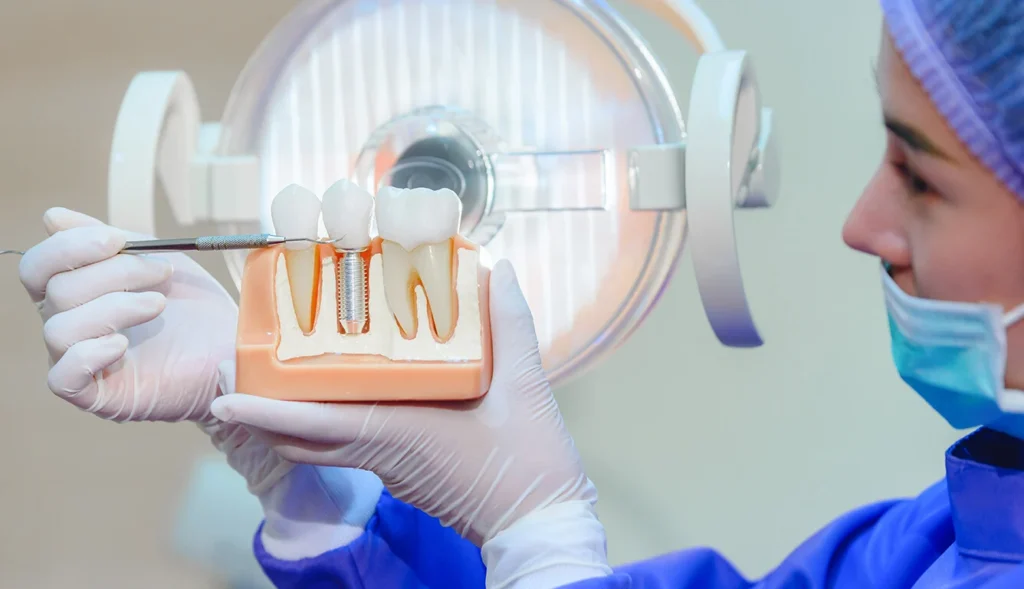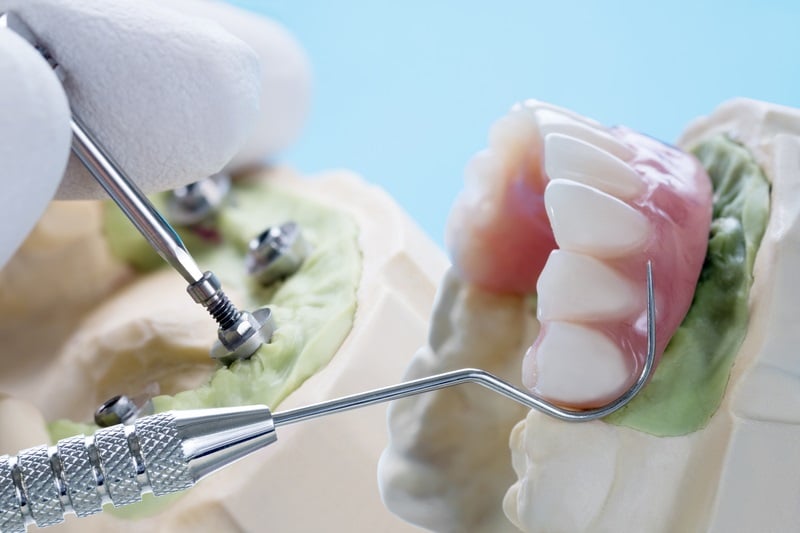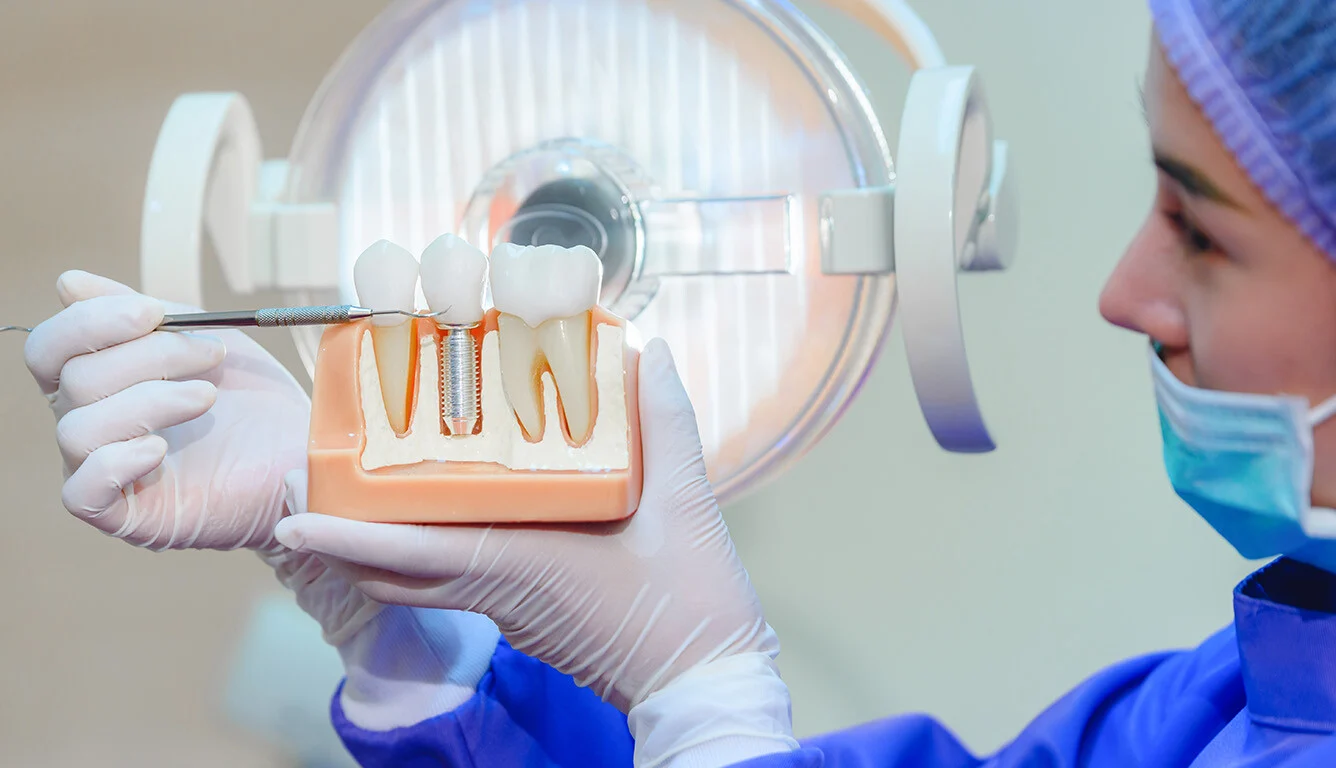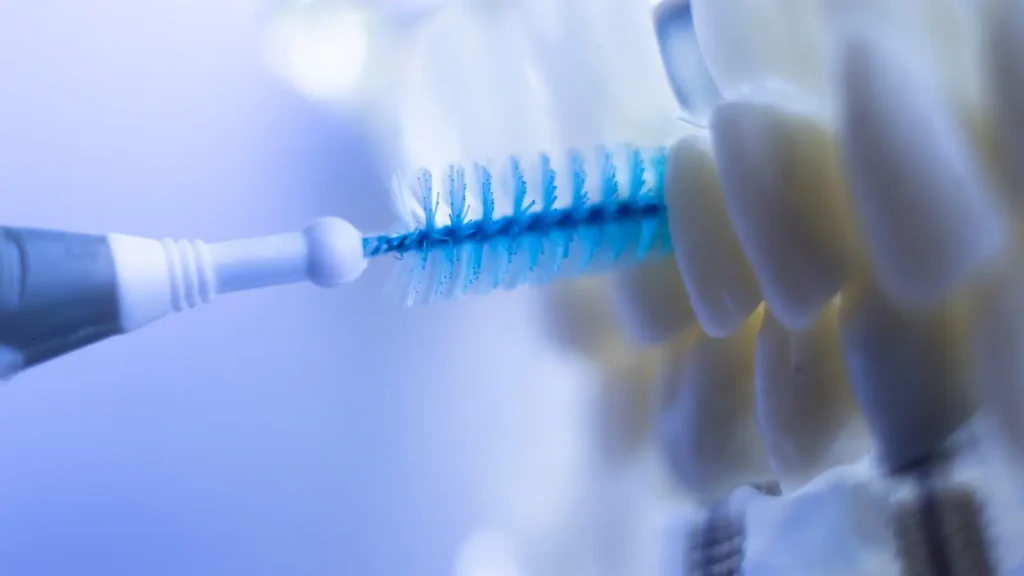
Dental implants offer exceptional longevity, with proper care enabling them to last over 25 years and achieve a 90-95% success rate after 10 years. The lifespan of dental implants depends on critical factors, including bone quality, surgical precision, implant material (titanium or hydroxyapatite-coated performs best), and crown quality. Maintaining dental implants requires a strict three-part care routine: thorough daily cleaning with specialized tools like soft electric toothbrushes and implant floss, biannual professional checkups to assess gum health and bite alignment, and essential lifestyle changes such as quitting smoking and managing diabetes. These practices ensure optimal osseointegration and long-term stability.
While the implant post itself can endure a lifetime with proper maintenance, the prosthetic crown typically needs replacement every 10-15 years—much like replacing tires on a well-maintained car. Patients who follow this comprehensive care plan experience 85% fewer complications compared to those who skip follow-ups. Consistent professional cleanings and timely crown replacements are key to preserving both the implant’s functionality and the patient’s smile. This disciplined approach safeguards your investment and ensures lasting oral health.
In this blog, we’ll explore together the lifespan of dental implants and what factors influence their durability and performance for us. We’ll discuss how long implants typically last, what key elements affect dental implants’ longevity, and how proper care can maximise their function over time. You’ll learn about the role of bone quality, oral hygiene, and lifestyle habits in maintaining your implant’s health.

Average Lifespan of Dental Implants
At D’Amico Dental Care, we’re proud to offer premium dental implants in wayland & watertown with exceptional longevity. Backed by the latest research (ADA, 2023), our implants demonstrate:
✔ 90-95% success rate at 10 years
✔ 85-90% survival rate at 20 years
✔ 50% of cases lasting 30+ years with optimal care
Key Factors Ensuring Your lifespan of dental implants:
✓ Precision Placement: Our surgeons use 3D-guided techniques for ideal positioning
✓ Premium Materials: Medical-grade titanium (Grade 4/5) for 20% greater durability
✓ Bone Optimization: We ensure adequate density/volume before placement
✓ Lower Jaw Advantage: Denser bone typically adds 10-15% to implant lifespan
Maximize Your Investment With:
→ Our Lifetime Implant Maintenance Program
→ Specialized cleaning protocols
→ Annual stability assessments
Factors That Affect the Lifespan of Your Implants
lifespan of dental implants depends on three main categories of factors: patient-related, technical, and biomaterial aspects. Patient-related factors include oral hygiene (proper brushing and implant-specific flossing), smoking (tripling failure risk), and uncontrolled systemic diseases like diabetes (40% higher failure risk). Studies show patients with regular dental checkups achieve 25% better long-term outcomes.
Technical factors encompass bone quality (adequate density/height), surgical precision (implant positioning accuracy), and prosthesis design (proper force distribution). Research confirms digital surgical guides improve placement accuracy by 30%. Regarding biomaterials, implant composition (grade 4/5 titanium vs. standard) and surface treatment (acid-etched or coated surfaces) are crucial – chemically-modified surfaces can reduce osseointegration time by 40%.

How Diet Affects the Longevity of Dental Implants
A proper diet plays a crucial role in the long-term success of dental implants. During the initial healing phase (6-8 weeks post-surgery), consuming protein-rich foods, vitamin C, and calcium (found in milk, eggs, fish, and chicken) significantly aids tissue recovery. Research shows that maintaining adequate vitamin D levels (above 30 ng/ml) can speed up osseointegration by 20%, while alcohol and acidic drinks like processed juices may disrupt healing. These nutritional choices create the ideal biological environment for your implant to integrate successfully with your jawbone.
For lasting results, a balanced diet with sufficient fruits, vegetables, and dairy helps maintain healthy bone and gum tissue around implants. Regular consumption of omega-3-rich foods like salmon may reduce peri-implantitis risk by 35%, while avoiding excessive sugar prevents bacterial infections. It’s equally important to protect your implant mechanically by not chewing hard items like ice or nuts, as these can damage the prosthetic components over time. Combining these dietary habits with good oral hygiene gives your implant the best chance to last for decades while keeping your surrounding oral tissues healthy.
How to Maintain Your Dental Implants for Longevity
Proper maintenance of dental implants requires a comprehensive three-part hygiene and care protocol. For daily cleaning, using a soft electric toothbrush twice daily, implant-specific super floss, and 0.12% chlorhexidine mouthwash 2-3 times weekly is essential. Studies show these methods reduce peri-implantitis risk by 60%. Interdental brushes of appropriate size (as recommended by your dentist) are particularly effective for cleaning between implants. Regular professional care is equally important, including biannual checkups to assess peri-implant health indicators (PPD, BOP) and specialized cleaning with Teflon-coated instruments. Research confirms that patients who receive professional cleanings twice annually experience 75% fewer implant complications.
Lifestyle modifications significantly impact the lifespan of dental implants. Addressing harmful habits like teeth grinding (with night guards), quitting smoking, and managing systemic conditions like diabetes are crucial for preserving your implants. Combining meticulous home care with professional maintenance and healthy lifestyle choices creates the optimal environment for your implants to thrive long-term. Patients who consistently follow this three-part protocol typically enjoy decades of trouble-free implant function while maintaining excellent oral health. Remember, your implants may last a lifetime, but they require the same careful attention as natural teeth to remain in optimal condition.
| Care Component | Recommended Practice | Clinical Benefit | Frequency |
| Daily Home Care | |||
| – Brushing | Soft electric toothbrush (implant-mode if available) | 50% better plaque removal vs manual brushes | 2x daily (morning/night) |
| – Flossing | Implant-specific super floss or water flosser | Reduces peri-implantitis risk by 60% | 1x daily |
| – Mouthwash | 0.12% chlorhexidine (alcohol-free) | Controls pathogenic biofilm | 2-3x weekly |
| – Interdental Cleaning | Angulated brushes (size per dentist’s recommendation) | 80% more effective at cleaning abutment connections | 1x daily |
| Professional Care | |||
| – Clinical Exams | Assessment of PPD (probing depth), BOP (bleeding on probing), and mobility | Early detection of bone loss | Every 6 months |
| – Professional Cleaning | Teflon/PEEK-coated instruments + air polishing (glycine powder) | 75% fewer complications vs irregular care | Every 3-6 months |
| – Radiographic Monitoring | Periapical X-rays or CBCT | Assess bone integration levels | Annually |
| Lifestyle Factors | |||
| – Bruxism Management | Custom night guard (hard acrylic) | Prevents implant overload fractures | Nightly use |
| – Smoking Cessation | Complete tobacco avoidance | Smokers have 3x higher failure rates | Ongoing |
| – Systemic Health | Diabetes control (HbA1c <7%), calcium/vitamin D supplementation | Improves osseointegration stability | As prescribed |
Signs That Your Implant Might Need Replacement
At D’Amico Dental Care, we help patients recognize early warning signs of potential implant complications. Key clinical symptoms include implant mobility, persistent pain while chewing, gum swelling/bleeding around the implant, visible position changes, or pus/discharge with a bad odor. Radiographic red flags include dark lines around the implant (radiolucency), bone loss exceeding 1.5mm in the first year or 0.2mm annually thereafter. Studies show that when two or more symptoms occur together, there’s an 85% likelihood the implant may require replacement.
If you notice any of these signs, immediate consultation with our implant specialists is crucial. We simplify maintaining dental implants at D’Amico Dental Care with complimentary yearly checkups using cutting-edge 3D scans. This proactive approach catches potential issues early and keeps your implant investment secure for decades
Regular Checkups and Implant Maintenance
A well-structured maintenance program is crucial for ensuring your dental implants remain healthy and functional for decades. The standard protocol includes check-ups at 1 week, 1 month, 3 months, 6 months, and annually after placement. During these visits, your dentist will carefully evaluate:
✓ Gum health around the implant (measuring pocket depth/bleeding)
✓ Bone levels through digital imaging
✓ Bite force distribution to prevent overload
✓ Professional cleaning with implant-safe tools
Research confirms that patients who maintain this schedule experience 75% fewer serious complications like peri-implantitis.
Your at-home care routine matters just as much:
- Use angled interdental brushes daily
- Clean with implant-specific floss (super floss)
- Rinse with antimicrobial mouthwash
- Avoid smoking/manage diabetes
High-risk patients (smokers/diabetics) need more frequent check-ups (every 3-4 months). Annual X-rays help monitor bone health.
The Role of Oral Hygiene in Implant Durability
Maintaining dental implants begins with excellent oral hygiene—the most critical factor for preventing peri-implantitis and ensuring your implants last decades. Studies show that poor oral care increases the risk of peri-implantitis by 5 times. An effective daily routine includes:
- Brushing twice daily with a soft-bristle toothbrush
- Using implant-specific floss (like super floss)
- Cleaning between teeth with interdental brushes
- Chlorhexidine mouthwash (0.12%) for two weeks monthly reduces bacterial plaque by 45%
Professional care is equally important:
- Get professional cleanings every 4-6 months
- Your dentist will check gum pocket depth and bleeding levels
- Smokers and those with gum disease history need more frequent visits (3x higher risk)
Combining consistent home care with regular dental checkups can extend the lifespan of dental implants to 20 years or more, while keeping your smile healthy and functional.
What to Do if an Implant Fails
When a dental implant fails, timely diagnosis and proper intervention are crucial. For early failures (before prosthesis placement), precise 3D imaging (CBCT) and clinical evaluation help identify the root cause – most commonly local infection (40% of cases), failed osseointegration (30%), or improper loading (20%). The standard protocol involves:
- Implant removal
- Guided bone regeneration (GBR) if needed
- 8-12 week healing period before replacement
Research shows this approach yields optimal results for reimplantation.
For late failures (after loading), treatment becomes more complex:
- Complete implant removal and site debridement
- Advanced bone grafting with growth factor-enhanced materials
- Digital treatment planning for precise new placement
Critically, addressing the underlying cause (e.g., diabetes control, smoking cessation) boosts replacement success rates to 85%.
Can Implants Last a Lifetime?
At D’Amico Dental Care, we optimize the lifespan of dental implants through precision placement and personalized care—with proper maintenance, your implant can truly last a lifetime. While the titanium implant base typically integrates permanently with your jawbone (showing 85-90% success rates at 20 years), the visible crown may need replacement every 10-15 years due to normal wear.
To maximize your dental implants’ longevity, we recommend:
✓ Implant-specific oral care using specialized brushes and floss
✓ Professional cleanings/exams every 6 months
✓ Systemic health management, especially for diabetic patients
✓ Lifestyle protections like smoking cessation and night guards
source: healthline
FAQ
- How long do dental implants typically last?
- Titanium Fixture: 95% of implants last over 10 years
- With proper care, it Can last a lifetime
- Success rate: 90-95% after 15 years
- Compared to bridges, Which usually last 7-10 years
- What factors influence the lifespan of dental implants?
- Oral hygiene: The most critical factor (brushing, flossing)
- Smoking: Reduces lifespan by 15-20%
- Systemic diseases: Uncontrolled diabetes
- Bad habits: Ice chewing or nail-biting
- Dentist’s expertise: The surgeon’s skill is highly impactful
- How long does the implant crown last?
- Ceramic crown: 10-15 years
- Zirconia crown: 15-20 years
- Replacement needed: Usually due to wear, not implant failure
- Replacement cost: Far lower than a new implant
- Are implants more durable than removable dentures?
- Dentures: Require replacement every 5-7 years
- Dental bridges: 7-10 years of functional lifespan
- Implants: At least 2-3 times longer longevity
- Cost-effectiveness: More economical long-term
- How can I make my implant last longer?
- Regular checkups: Every 6 months
- Professional cleaning: 1-2 times yearly
- Quit smoking: Increases lifespan by 30%
- Night guard: If you grind your teeth
- Dietary habits: Avoid extremely hard foods
- How do I know if my implant needs replacement?
- Loose implant
- Persistent pain/discomfort
- Gum inflammation/infection around the implant
- Visible bone loss (on X-rays)
- Cracked or damaged crown
- What’s the long-term success rate of implants?
- 10 years: 90-95% success rate
- 15 years: 85-90% success rate
- 20 years: 80-85% success rate
- Higher success in the lower jaw: Compared to the upper jaw
- Lower success in smokers: 10-15% reduction



